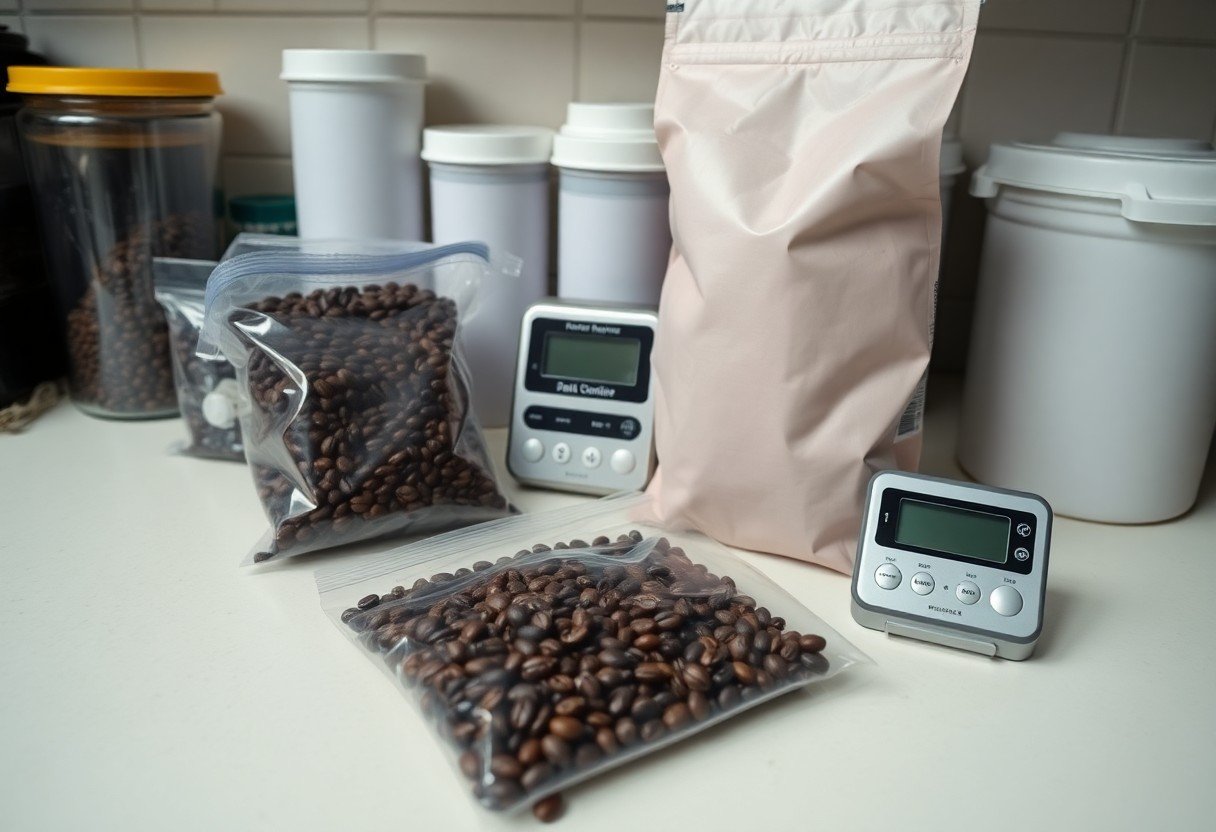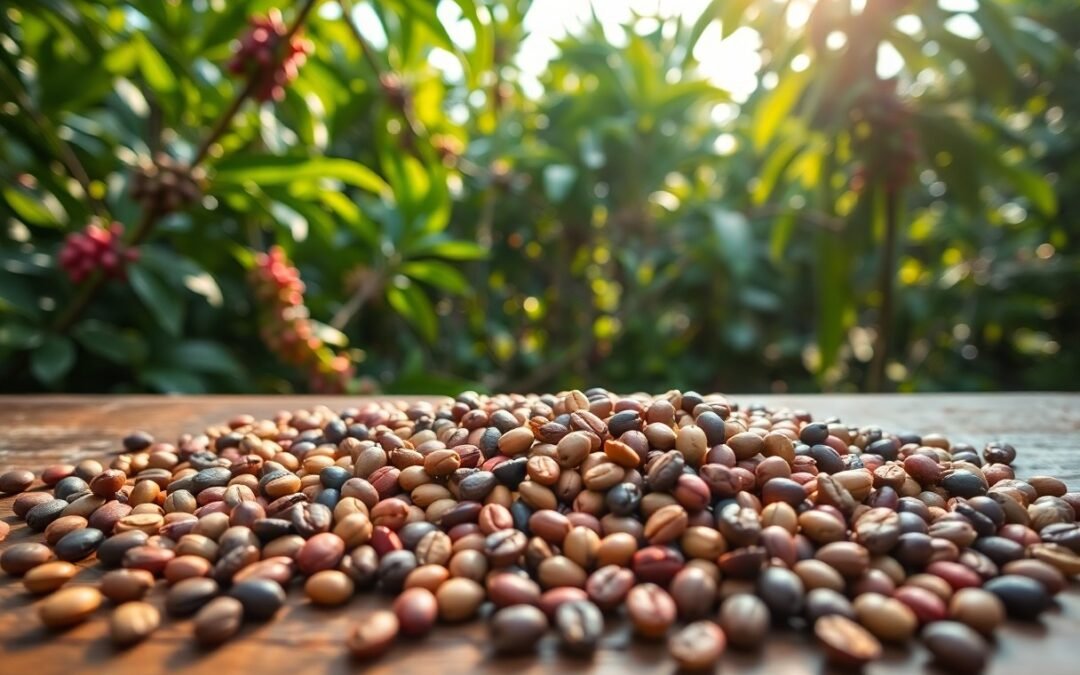Over time, coffee beans can lose their flavor and aroma, leaving you with a lackluster cup of joe. Understanding the factors that influence the longevity of your coffee beans is vital for preserving their quality. From storage conditions to the type of packaging, every detail affects how long your beans maintain their freshness. In this blog post, you’ll learn about the key elements that can help you enjoy your coffee at its best for a longer period.
The Role of Environment in Coffee Bean Longevity
Environmental factors play a significant role in the longevity of your coffee beans, affecting their freshness and overall quality. A stable environment can help preserve the delicate flavors and aromas that make your cup of coffee enjoyable. Understanding the conditions that can either extend or diminish the lifespan of your beans is key to maintaining their integrity from the moment you purchase them until they meet your brewing technique.
Influence of Humidity and Temperature
| Humidity Levels | High humidity can lead to mold growth on the beans, while low humidity may cause them to dry out, affecting flavor and aroma. |
| Optimal Temperature | Stable temperatures between 60°F and 70°F (15°C to 21°C) are ideal; extreme heat can accelerate the aging process. |
Importance of Storage Conditions
Storing your coffee beans in the right environment is necessary for their longevity. Exposure to light, air, and moisture can lead to flavor degradation and loss of aroma. Keeping your beans in an opaque, airtight container away from direct sunlight will significantly extend their freshness. Ideally, a consistent temperature and humidity level will preserve their original flavors longer than commonly used glass jars or flimsy packages that might expose your beans to harmful elements.
The Chemistry of Coffee Bean Deterioration
The deterioration of coffee beans primarily arises from chemical processes that compromise their quality over time. Two significant reactions at play are oxidation and the effects of moisture. Each of these factors can drastically alter the flavor compounds and overall freshness of your coffee. Understanding how these reactions work helps you take better care of your beans to prolong their life and maintain their rich characteristics.
Oxidation and Its Effects
Oxidation occurs when coffee beans are exposed to air, leading to a breakdown of the flavorful oils and compounds within. This process can cause a gradual loss of the vibrant notes that initially defined your coffee, resulting in a stale, flat taste. Studies show that beans stored in a vacuum-sealed bag can maintain freshness three to four times longer than those left exposed to air.
The Impact of Moisture on Flavor Profiles
Moisture is another factor that can heavily influence the flavor profiles of your coffee. Beans contain crucial oils that are sensitive to humidity levels, and excessive moisture can lead to mold growth or a damp taste. Keeping your beans in an airtight, moisture-proof container can protect their integrity, ensuring you enjoy the intended flavors each time you brew.
Excess moisture in coffee can interact with volatile aromatic compounds, causing them to evaporate and diminishing their intensity. For instance, a humidity level above 60% can start to negatively affect the freshness of your beans. Conversely, too little moisture may lead to a dry, brittle texture, which also compromises flavor extraction during brewing. A stable, controlled environment is crucial, as it preserves the complex nuances that make your coffee experience enjoyable.

Packaging: More Than Just Protection
The way your coffee is packaged plays a significant role in preserving its freshness and flavor. Packaging serves as a barrier against environmental factors such as air, moisture, and light that can degrade coffee quality. High-quality packaging not only keeps your coffee beans safe but also enhances their shelf life, ensuring you enjoy that fresh brew with every cup.
How Packaging Affects Shelf Life
Effective packaging can significantly extend the shelf life of your coffee beans by minimizing exposure to oxygen and moisture. Vacuum-sealed bags and one-way valves allow gases to escape without letting air in, preventing oxidation and staleness. Research indicates that coffee stored in airtight packaging can remain fresh for months, compared to just weeks in less secure options.
Innovations in Coffee Packaging Technology
Recent advancements in coffee packaging technology focus on sustainability and enhanced preservation methods. New materials that combine biodegradability with oxygen barrier properties are becoming popular among roasters. This way, you can enjoy your coffee guilt-free while also ensuring it stays fresh longer. Furthermore, smart packaging solutions track freshness and temperature, alerting you to the optimal time to brew, ultimately changing how you interact with your coffee.
Innovations in coffee packaging technology have resulted in the development of multi-layer bags that offer superior protection against light and oxygen while being environmentally friendly. Additionally, some brands are exploring the use of nitrogen flushing and UV-blocking materials that significantly reduce flavor loss. These technologies not only extend the shelf life of beans but also align with increasing consumer demand for sustainable choices, providing you with fresh coffee without compromising the planet.
Roast Levels and Their Impact on Longevity
The roast level of coffee beans directly affects their longevity due to varying chemical compositions and moisture content. Lighter roasts retain more of the coffee’s inherent oils and moisture, while darker roasts tend to experience more extensive chemical changes, leading to a drier, more brittle bean. This transformation can influence how long your coffee beans will maintain their freshness and flavor after opening. Generally, lighter roasts may last longer on the shelf than their darker counterparts, but other factors, like storage conditions, will still play a significant role.
Light vs. Dark Roast: The Shelf Life Debate
A debate continues over which roast lasts longer, with many assuming that lighter roasts hold an advantage due to higher oil content. In truth, dark roasts, while they may lose freshness more rapidly, can age better in the right conditions. Light roasts often have a more complex flavor profile, which can diminish faster when exposed to air, moisture, or heat, hinting that their assumed longevity may not always hold true in practice.
How Roasting Technique Influences Preservation
The technique used in roasting can impact the preservation of coffee beans. Fast roasting methods that produce a darker roast often lead to the formation of carbon dioxide and other gases that can escape, leaving the beans more susceptible to oxidation. Conversely, slower roasting techniques tend to minimize gas escape and create a denser bean. These denser beans often have a better capacity to retain freshness for a longer period, as the internal structure better withstands environmental factors. As a result, thoughtful roasting approaches not only influence flavor but also enhance the overall shelf life of your coffee.
The Trade-off between Freshness and Flavor
Finding the perfect balance between freshness and flavor can be challenging. As coffee beans age, their flavors can shift, sometimes improving complexity but often leading to a dull taste. Ideally, coffee should be consumed within two to four weeks post-roast for optimal flavor, yet many enthusiasts may find themselves drawn to beans a few months old that have developed unexpected nuances. Ultimately, understanding this trade-off is important for appreciating your coffee experience fully.
Balancing Flavor Profiles with Storage Time
Storage time plays a critical role in either enhancing or diminishing the flavor profiles of your coffee. Freshly roasted beans tend to exhibit vibrant flavors, which may decline over time but can still offer some interesting notes if stored properly. For those who enjoy experimenting, trying beans that are slightly older can lead to unique discoveries, but be cautious not to stray too far from freshness, as detrimental flavors can emerge.
Consumer Preferences and the Freshness Paradox
The topic of consumer preferences reveals an intriguing paradox regarding coffee freshness. While many consumers gravitate toward fresh coffee for its perception of quality, some roast profiles and bean origins may actually develop more complex flavors after a short aging period. This paradox highlights the subjective nature of flavor, as different palates will respond differently to age, contributing to diverse experiences and preferences in coffee enjoyment.
Understanding the Freshness Paradox calls attention to the individual nature of taste. Some coffee drinkers enjoy the bright, fruity notes of fresh coffee, while others may prefer the deeper, mellower qualities that can surface after beans have rested for a couple of weeks. Interestingly, certain specialty roasters recommend letting specific coffees “breathe” for several days post-roast to unlock hidden flavors, challenging the notion that fresher is always better. Acknowledging these distinctions enables you to refine your coffee choices based on your personal palate rather than adhering strictly to freshness norms.
Conclusion
Considering all points, the longevity of your coffee beans hinges on several factors, including their storage conditions, the type of bean, and the roast level. To ensure your beans remain fresh for as long as possible, keep them in an airtight container away from light, moisture, and heat. Additionally, opt for whole beans and grind them just before brewing to preserve flavor. By paying attention to these details, you can enjoy the rich taste of your coffee for an extended period.
Q: What are the main factors that affect the freshness of coffee beans?
A: The freshness of coffee beans is influenced by several factors, including their exposure to air, light, moisture, and temperature. Oxygen can lead to oxidation, which deteriorates flavor over time, while light can degrade coffee compounds and impact taste. High humidity can cause beans to absorb moisture, leading to mold growth or spoilage, whereas keeping coffee beans in a cool, dark place helps preserve their freshness. Utilizing airtight containers can significantly extend the beans’ lifespan by reducing exposure to air and light.
Q: How does the roast level of coffee beans impact their longevity?
A: The roast level of coffee beans directly impacts how long they can maintain their flavor and freshness. Generally, lighter roasts tend to retain their freshness longer than darker roasts because they contain less oil and are less porous. Dark roast beans release oils during the roasting process, making them more vulnerable to staleness as those oils can oxidize quickly. It’s often advised to consume darker roasts sooner after roasting to enjoy their full flavor potential.
Q: What role does packaging play in the lifespan of coffee beans?
A: Packaging is an important factor in determining the longevity of coffee beans. Proper packaging can protect beans from factors that can degrade their quality, such as light, air, and moisture. High-quality, resealable bags made with a one-way valve are ideal since they allow gases released from the coffee to escape without letting air in. Vacuum-sealed packaging also offers excellent protection by minimizing air exposure, thus extending the shelf life of the coffee beans. When choosing coffee, look for well-packaged beans that prioritize freshness until they reach your home.

